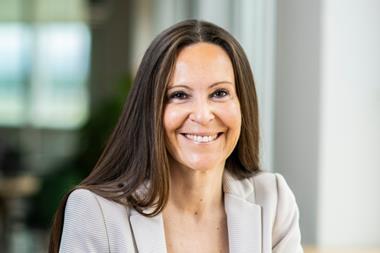
When it comes to sustainability, the pandemic has placed new pressures on businesses across the consumer goods sector to hasten the pace of change.
While internal process improvements help companies meet sustainability goals, strategic M&A may bring about a crucial step change, offering a suitable and agile bridge to achieving sustainability targets, enabling companies to bring new capabilities and products quickly to market.
But how easy is it to include or assess sustainability of an asset being acquired or sold? Most companies struggle to measure it in the deal-making process and risk drifting away from their long-term goals.
Prior to Covid, sustainability typically focused on environmental issues, but the pandemic has broadened the public’s perspective to include people, workforces, suppliers and supply chains.
The pandemic has also propelled an eco-friendly shift in consumer buying behaviors and preferences.
Direct-to-consumer (DTC) channels have proliferated, enabling companies to stay closely connected to consumers, identify and respond to their needs, and strengthen customer relationships and brand loyalty. Several companies, including Kraft Heinz (via Heinz to Home), Mars (via its acquisition of Foodspring) and Nestlé (with its acquisition of Mindful Chef) have pivoted into DTC channels via inorganic and organic means.
While transforming distribution channels can unlock advantages for services and customer-centricity, it can also help meet key corporate sustainability goals.
DTC channels may also improve last-mile distribution efficiency, as transportation is no longer needed from distribution channels to stores and from stores to consumers. Increased DTC reliance will eventually help achieve economies of scale and solve the major challenge that many of today’s sustainable products face: that they are typically expensive to buy and produce.
The pandemic has dented some sustainability efforts in the short term, unfortunately, as players take steps to expand margins and control costs amid expectations that consumer spending will weaken as recession fears grow. However in the long term, companies are expected to continue investing in sustainability across procurement, production, processing and packaging.
Keeping sustainability in focus
As consumers consider sustainability a key purchasing driver, companies and investors are expected to increasingly tie their ESG goals to growth – both organic and inorganic. Players are expected to keep pursuing ESG insights and impact analysis as an essential part of M&A due diligence.
While some companies are measuring asset sustainability when buying and selling, others struggle to recognise sustainability for its potential to enhance competitive advantage and financial performance. Such buyers and sellers can primarily be divided into three categories:
- Fence-sitters – those who remain neutral or uncommitted to sustainability in general and forgo sustainability measurements during deal making;
- Dabblers – those who are ticking a box on ESG-related diligence by just focusing on process compliance and governance;
- Advocates – the growing number of businesses seeking recognisable sustainability patterns in their transactions and treating sustainability as a significant factor in their decision-making – in some cases above and beyond financials.
Whether they are pursuing portfolio enhancements through ESG-driven acquisitions, or value creation through ESG integration during the divestment process, Advocates wisely consider sustainability an integral part of corporate growth strategies throughout the M&A lifecycle phases – pre-deal, in-deal and post-deal.
Businesses can get ahead of the game by redeploying capital and actively looking for sustainable brand acquisitions, while reorganizing portfolios and disposing assets not deemed sustainable. This can be transformational and may not involve mega deals alone but also deals for small innovative brands featuring transformative business models.
For example, Danone VC invested in 12 firms focused on shaping a sustainable future. Such acquisitions not only help achieve sustainability goals among products and processes, but are also seen as a key to enter new markets.
It’s time for the Fence-sitters and Dabblers to catch up
A recent survey from Capital Dynamics showed at least 76% of private equity managers perceived ESG as a value driver, and private funds are now willing to pay a premium for ESG or claim deal-price reductions.
ESG also appears to have a direct impact on EBITDA. KPMG recently analysed M&A transactions in consumer sub-sectors to understand ESG deals’ financial metrics and value drivers. We observed a 14.4% higher average EBIT multiple of 23.3x for sustainability-driven acquisitions.
Yet still, most industry players remain Fence-sitters and Dabblers.
Going forward however, the industry is expected to follow the Advocates, with an eye on the long term to include sustainability as core for M&A to enhance value in the portfolio and an attractive return when the owner decides to exit.



















No comments yet